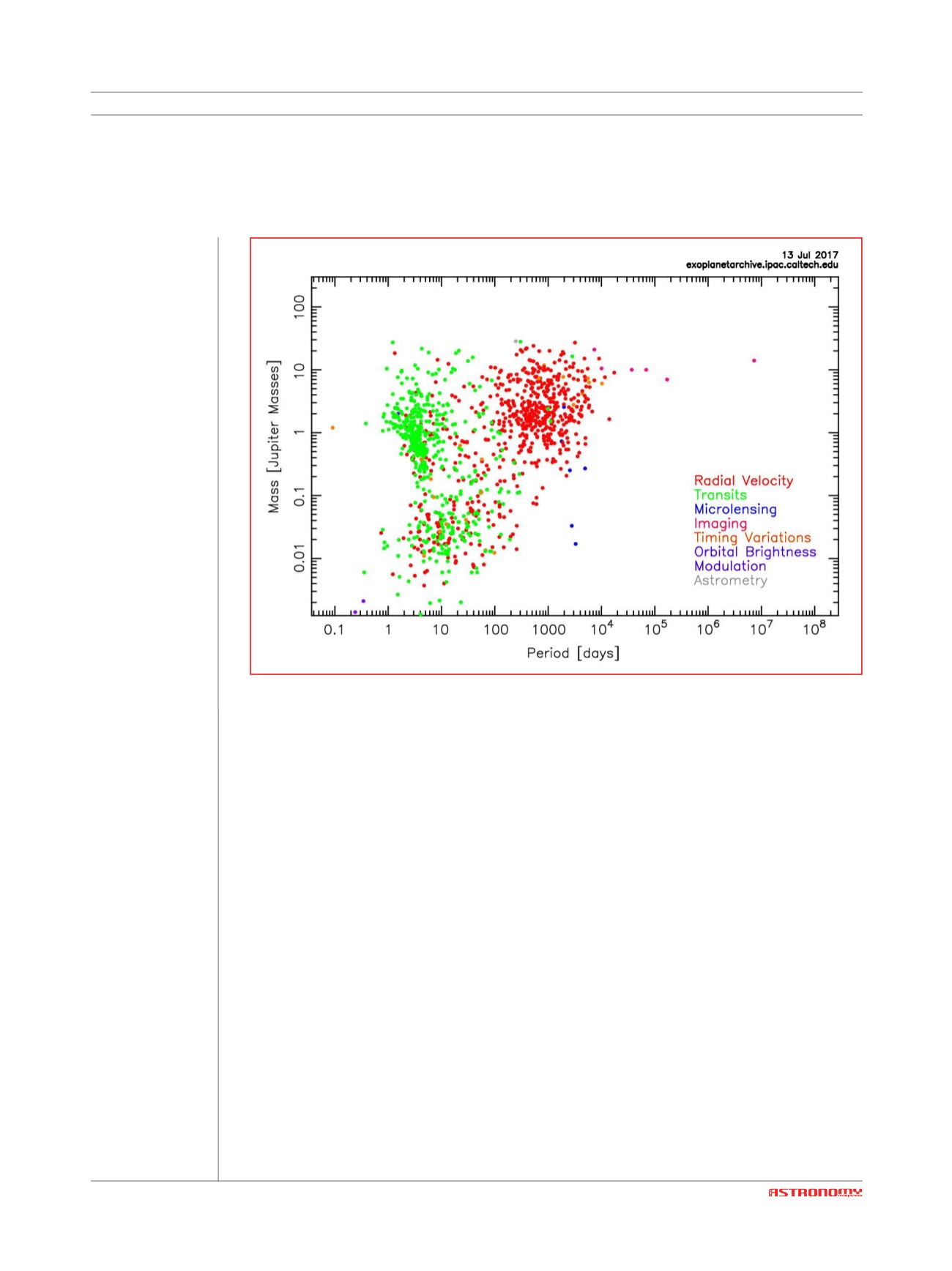

27
SEPTEMBER-OCTOBER 2017
ASTRONAUTICS
M
ass-period
distribution
of the exoplanets
discovered to
date with all the
techniques
available to
astronomers.
[Caltech]
class evolves over time as a function of stel-
lar properties. The proper classification of
a planet cannot be considered separately
from the context in which it was formed
and the time elapsed since its formation.
That planets evolve dynamically and physi-
cally is a given: in the early stages of the
formation of a planetary system, orbits
change, sometimes noticeably; as millions
and billions of years go by, Earth-sized
planets lose their primordial atmosphere
of hydrogen and replace it with one more
conducive to life (as we know it); the at-
mospheres of smaller, rocky planets grad-
ually dissolve in the flow of stellar ra-
diation; finally, the gas giants cool and
contract. In short, PLATO will play a key
role in the proper interpretation of the
structures of planetary systems, and we
will finally know whether or not our solar
system is similar to many others. Obviously,
the most eagerly awaited discoveries will
be those related to Earth-sized planets or-
biting around a solar-type star within the
habitable zone (where water can exist in
liquid form). Although PLATO’s targets will
probably include red dwarfs and stars
larger than the Sun, a number of recent
studies have raised serious questions about
the habitability of planets that orbit stars
that are significantly different from the
Sun. Researchers’ attention will therefore
likely be focussed on star-planet twins of
the Sun-Earth system. Of the 3500 extra-
solar planets confirmed to date (another
1000 are being verified), about 1% are of
sizes similar to that of Earth and orbit
within the habitable zone of their stars. If
this percentage is representative of the to-
tality of existing planets, we can expect
PLATO to discover a few hundred planets
potentially similar to Earth. Once the most
promising targets have been selected, sci-
entists will try to observe them at a dis-
tance from the stellar disc, and their atmo-
spheres will be spectroscopically examined
by JWST, ELT and the most powerful tele-
scopes currently available to astronomers.
Then we will know whether our galaxy
contains habitable planets within rela-
tively short distances from us and whether
they already host life.
!
















